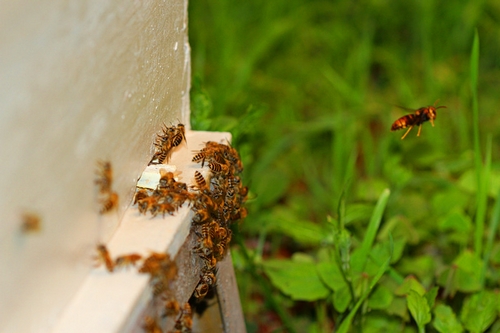An ‘I see you’ (ISY) prey–predator signal can co-evolve when such a signal benefits both prey and predator. The prey species benefits from its ISY signal because attacks by predators are reduced. The predator species benefits because it can break off attacks that are unlikely to succeed and may be dangerous without the element of surprise. Because the signal and response co-evolve in two species, the behavior underlying an ISY signal is expected to have a strong genetic component and cannot be entirely learned.
The previous studies of Prof. TAN Ken from XTBG have suggested that the shimmering behavior of the Asian hive bee Apis cerana in the presence of its predator the hornet Vespa velutina is an example of an “I see you” signal. They further conducted a study to determine whether the shaking signal of A. cerana workers in response to the presence of a hornet is indeed inherited by exposing naïve workers of both A. cerana and A. mellifera to tethered hornets and non-threatening butterflies.
They observed the behavior of naïve workers from three colonies each of A. cerana and A. mellifera in response to their predator V. velutina and a benign butterfly (Papilio xuthus). Observations were carried out from May to August of 2012 at Yunnan Agricultural University.
Their observations found that young A. cerana workers emerged in isolation from older siblings could perform the shimmering display without prior experience of hornets. Workers did not need to learn that V. velutina was an enemy by witnessing hunting events. They distinguished hornets from similarly sized butterflies. A. cerana almost never produced the shimmering display in the presence of butterflies (which are larger and more conspicuous than V. velutina), even though the butterfly was moved in a way that mimicked the hunting movements of the hornet.
Their observations are strong evidence that the shaking behavior was innate (it is executed ‘on the first available opportunity to occur, without the possibility of previous learning’) and tuned to the presence of the bee’s major predator group, Asian hornets.
The study entitled “The ‘I see you’ prey–predator signal ofApis ceranais innate” has been published online in Naturwissenschaften.

Asian hive bees and their predator Asian hornets (Image by TAN Ken)

